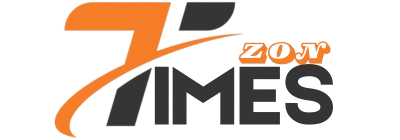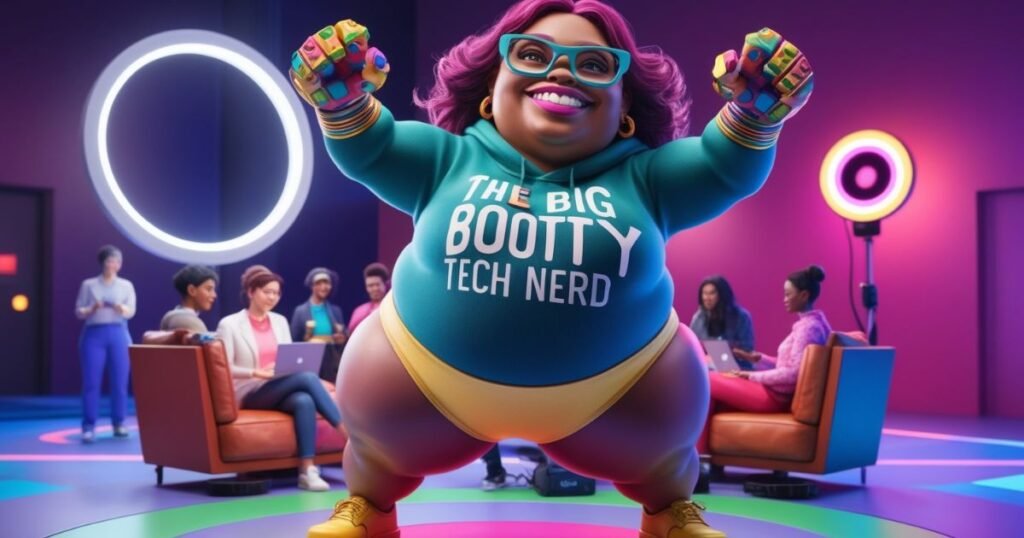The Big Booty Tech Nerd is changing old ideas in the tech industry by supporting inclusion, individuality, and diversity. With more female leaders, LGBTQ+ inclusion, and neurodiversity, the tech world is now open to many different voices. This movement pushes back against old ways of thinking, focusing on self-acceptance, body positivity, and valuing tech skills overlooks.
Companies are starting to prioritize diverse teams and are building inclusive workplaces that encourage new ideas. As society changes, embracing this shift creates a more flexible and creative space, allowing the Big Booty Tech Nerd to grow and help shape the future of tech through diversity and empowerment.
This article dives deep into the growing importance of inclusion and the concept of the “Big Booty Tech Nerd” – a term that challenges outdated stereotypes in the world of technology.
Defining the “Big Booty Tech Nerd”
So, what exactly is a big booty tech nerd? Simply put, it’s someone who defies the old-school tech stereotypes. These are individuals who rock their curves while crushing code, who embrace their bodies while excelling in bytes. They’re the embodiment of the idea that you can be both a tech expert and proud of your physique.
This term isn’t just about physical attributes – it’s a state of mind. It’s about being confident in your skin while being a whiz at what you do. The big booty tech nerd represents a broader movement in tech, one that says you don’t have to fit a certain mold to be brilliant at your job.
Breaking Stereotypes in the Tech Industry
For too long, the tech world has been plagued by narrow stereotypes. But times are changing, and these stereotypes are being shattered one innovative solution at a time. Today’s tech pros come in all shapes, sizes, and backgrounds, proving that brilliance isn’t limited to any one type of person.
Take Sarah, for example. She’s a curvy coder who leads a team at a top tech firm. “I used to worry that I didn’t fit the ‘tech look,'” she says. “But I realized my skills speak louder than any stereotype.” Sarah’s story is just one of many breaking stereotypes and paving the way for a more inclusive tech landscape.
Why Representation Matters: The Need for Diversity in Tech
Representation isn’t just a buzzword – it’s crucial for the future of tech. When we see people like us succeeding in an industry, it opens doors and inspires others to follow. Diverse teams in tech aren’t just good for morale; they’re good for business too. Studies show that diverse teams are more innovative and better at problem-solving.
Consider this: a McKinsey report found that companies in the top quartile for racial and ethnic diversity are 35% more likely to have financial returns above their respective national industry medians. This isn’t just about doing the right thing – it’s about smart business.
Embracing Body Positivity and Individuality in the Tech Space
The body positivity movement has finally made its way into the tech world, and it’s about time. Tech companies are realizing that a person’s worth isn’t determined by their waistline but by their ability to innovate and create. This shift is creating a more welcoming environment for all body types.
“I used to try to hide my curves,” says Alex, a UX designer. “Now, I wear them proudly. My body doesn’t define my skills, but it is part of who I am.” This kind of self-acceptance is becoming more common in tech offices, leading to happier, more productive employees.
The Intersection of Tech, Body Positivity, and Neurodiversity
The tech industry isn’t just embracing different body types – it’s also recognizing the value of neurodiversity in tech. From autism to ADHD, companies are realizing that different ways of thinking can lead to groundbreaking innovations.
This intersection of body positivity and neurodiversity is creating a more holistic approach to inclusion. It’s not just about how you look or how your brain works – it’s about valuing each person’s unique contributions.
Creating an Inclusive Workplace for Future Generations
Building an inclusive tech workplace isn’t just about today – it’s about shaping the industry for future generations. Companies are implementing policies that go beyond just hiring diverse candidates. They’re creating workplace environments that celebrate differences and foster belonging.
Some strategies include:
- Implementing bias training for all employees
- Creating mentorship programs for underrepresented groups
- Offering flexible working conditions to accommodate different needs
- Celebrating diverse cultural events and holidays
The Rise of Women and LGBTQ+ Representation in Tech
Female leadership in tech and LGBTQ+ support in tech have seen significant growth in recent years. Women are breaking through the glass ceiling, taking on leadership roles and inspiring the next generation of female tech leaders.
The LGBTQ+ community is also finding its place in tech, with many companies actively working to create inclusive environments. Pride groups, ally programs, and inclusive benefits are becoming the norm rather than the exception.
Prioritizing Neurodiversity and Different Learning Styles
Tech companies are learning that neurodiversity in tech isn’t just about inclusion – it’s about tapping into unique talents. Many are creating programs specifically designed to recruit and support neurodivergent individuals.
For example, Microsoft’s Autism Hiring Program has been a game-changer, providing opportunities for individuals on the autism spectrum to showcase their talents in a supportive environment.
Bridging the Gap Between Tech and Diversity
Bridging the diversity gap in tech isn’t just about hiring – it’s about creating pathways for underrepresented groups to enter and thrive in the industry. This includes:
- Outreach programs in diverse communities
- Scholarships for underrepresented groups
- Partnerships with diverse coding bootcamps
- Mentorship programs connecting industry leaders with up-and-coming talent
Empowering the Next Generation of Tech Enthusiasts
Empowerment in tech starts early. Many organizations are focusing on inspiring diverse youth to pursue tech careers. Code.org, for instance, works to increase participation of women and underrepresented minorities in computer science.
By showing young people that tech is for everyone, regardless of how they look or where they come from, we’re sowing the seeds for a more diverse and innovative tech future.
Conclusion: Moving Towards a More Inclusive Tech Future
The Big Booty Tech Nerd represents a powerful blend of beauty and brains, breaking down stereotypes in the tech industry. By embracing all body types, backgrounds, and ways of thinking, we’re not just changing the face of tech – we’re revolutionizing its potential.
As we move forward, let’s continue to challenge stereotypes, celebrate diversity, and remember that great ideas can come from anyone, anywhere. The future of tech is diverse, inclusive, and yes, it might just have a big booty.
FAQ’s
How is diversity important in the tech industry?
Diversity fosters innovation by bringing together different perspectives and ideas, leading to more creative solutions and a better understanding of diverse user needs.
What role does female leadership play in tech?
Female leadership in tech promotes equality, encourages more women to pursue careers in technology, and helps create a more inclusive workplace culture.
Why is neurodiversity significant in tech?
Neurodiversity recognizes that people have different ways of thinking and learning. Embracing this diversity enhances problem-solving and innovation within tech teams.
How can companies support LGBTQ+ employees?
Companies can create an inclusive environment by implementing policies that protect against discrimination, offering employee resource groups, and actively promoting LGBTQ+ representation in leadership.

Vincenzo is a dedicated SEO expert with a passion for delivering top-quality content. He uses his knowledge to help websites grow and succeed in the digital world.

